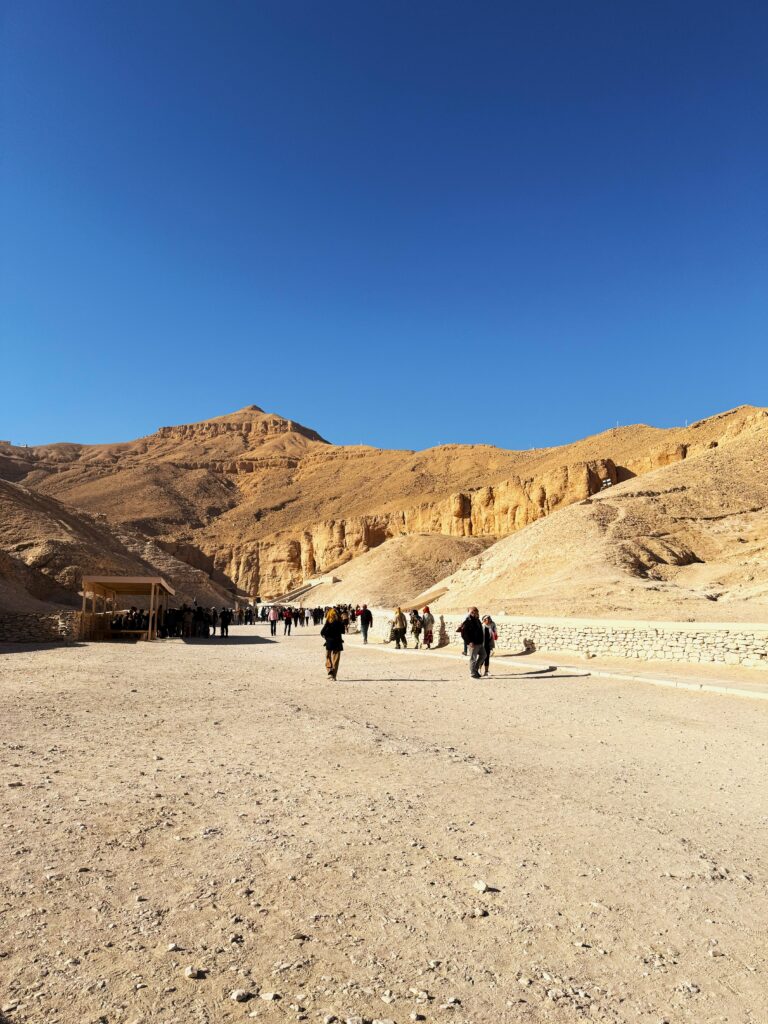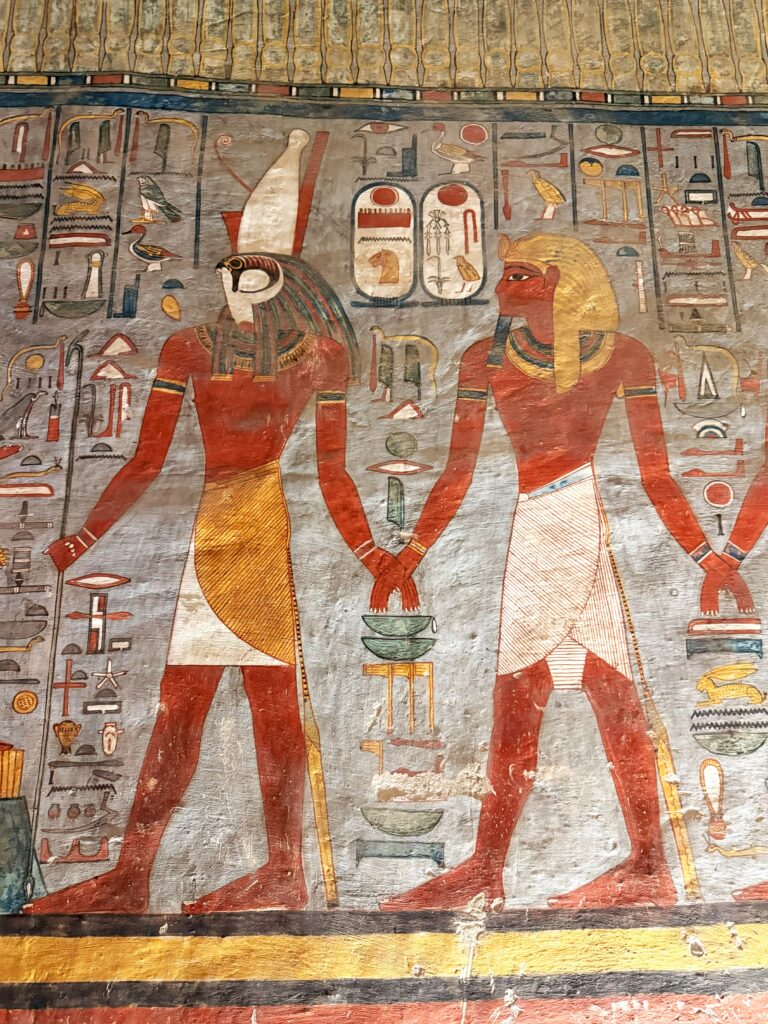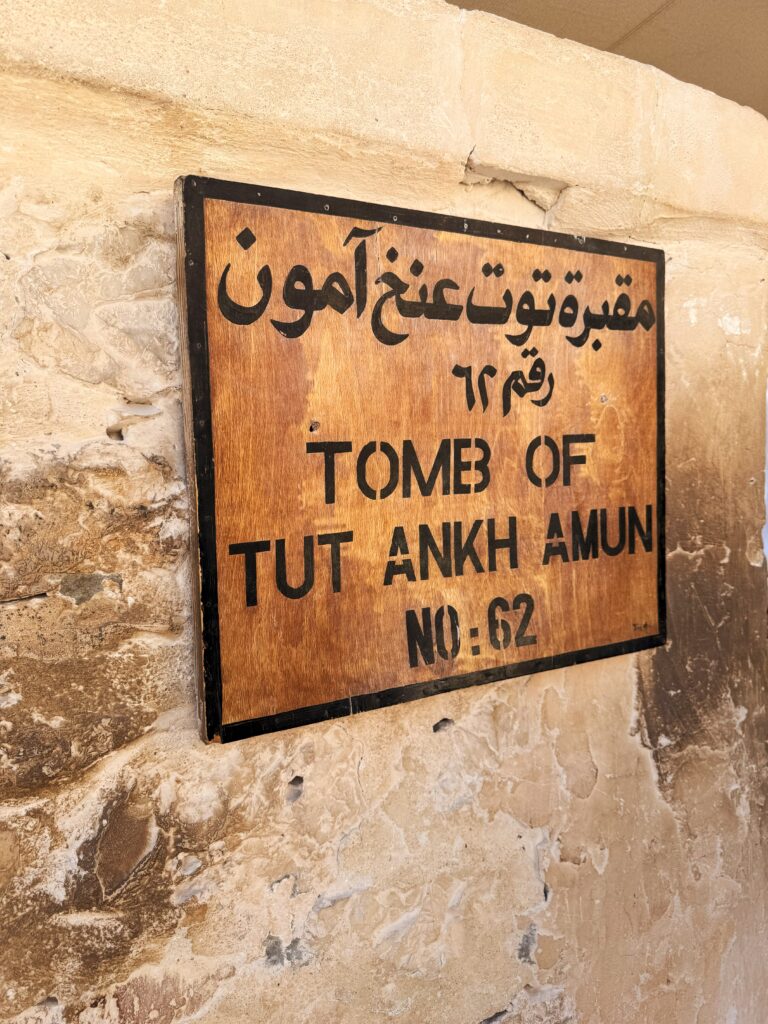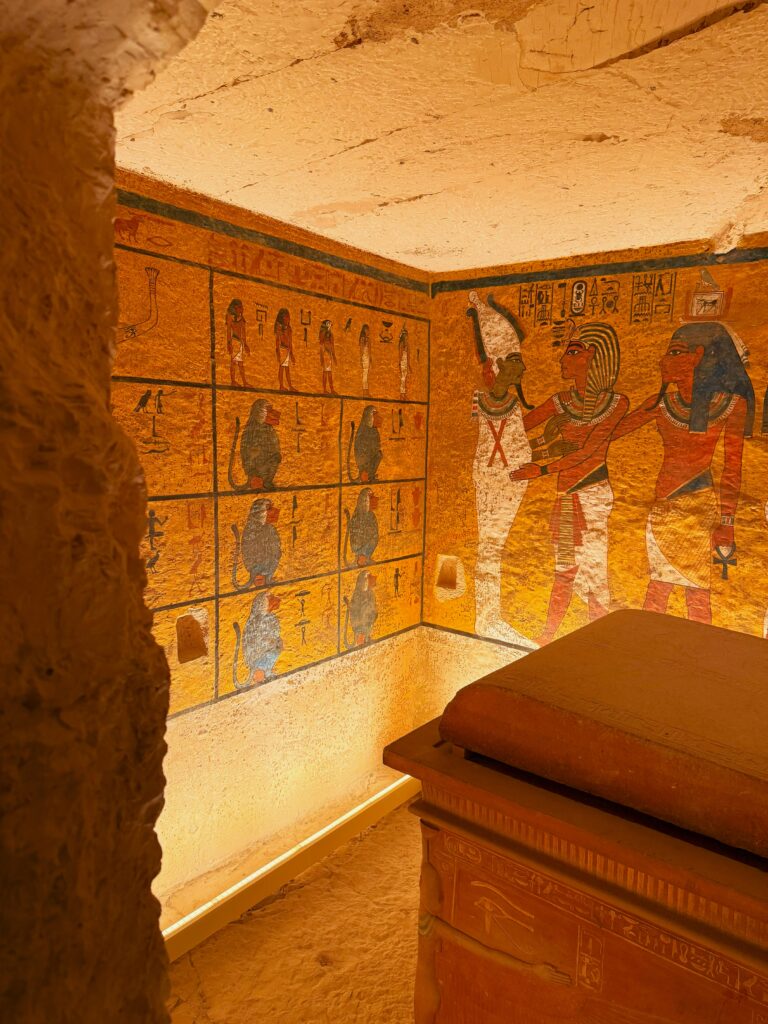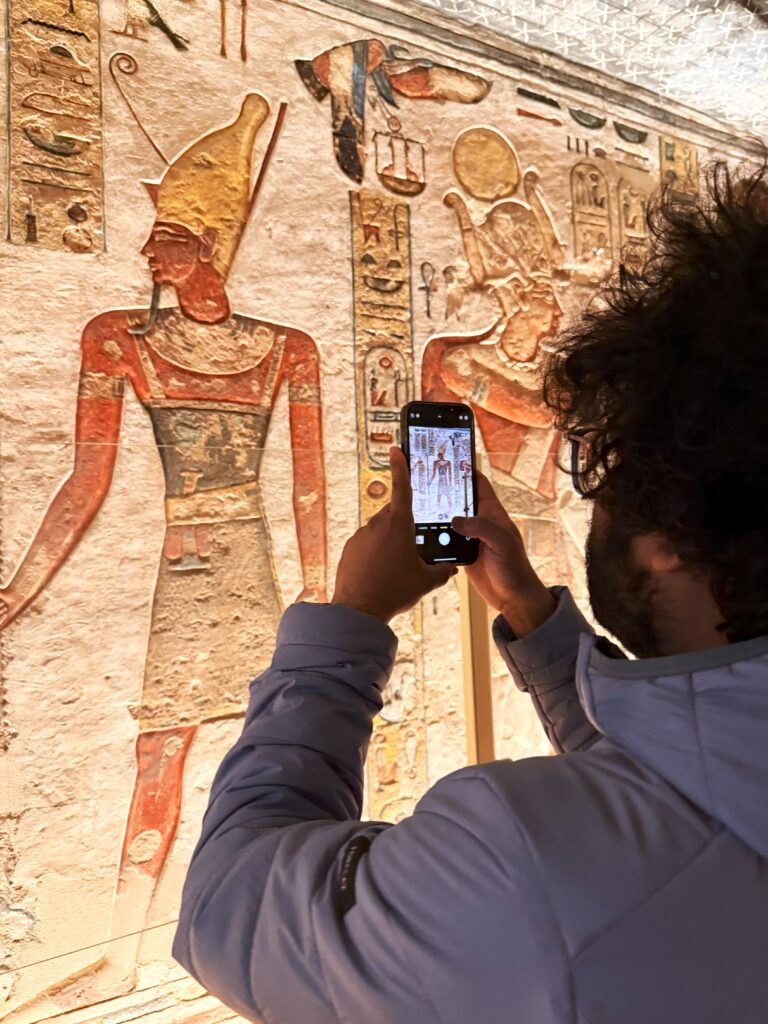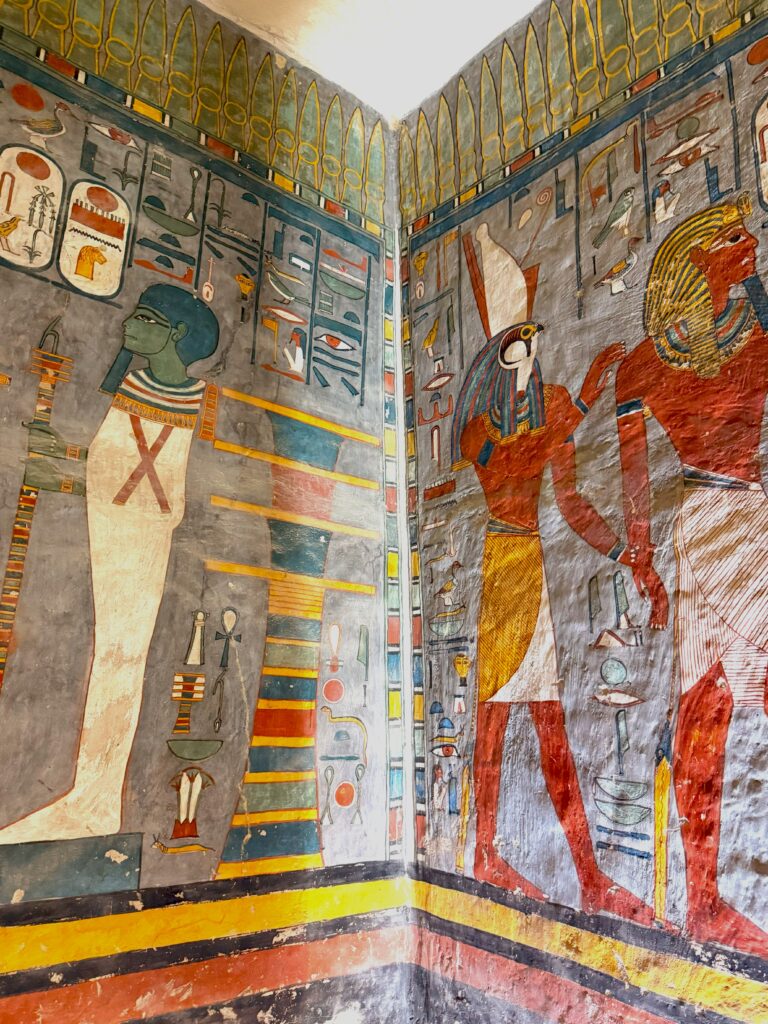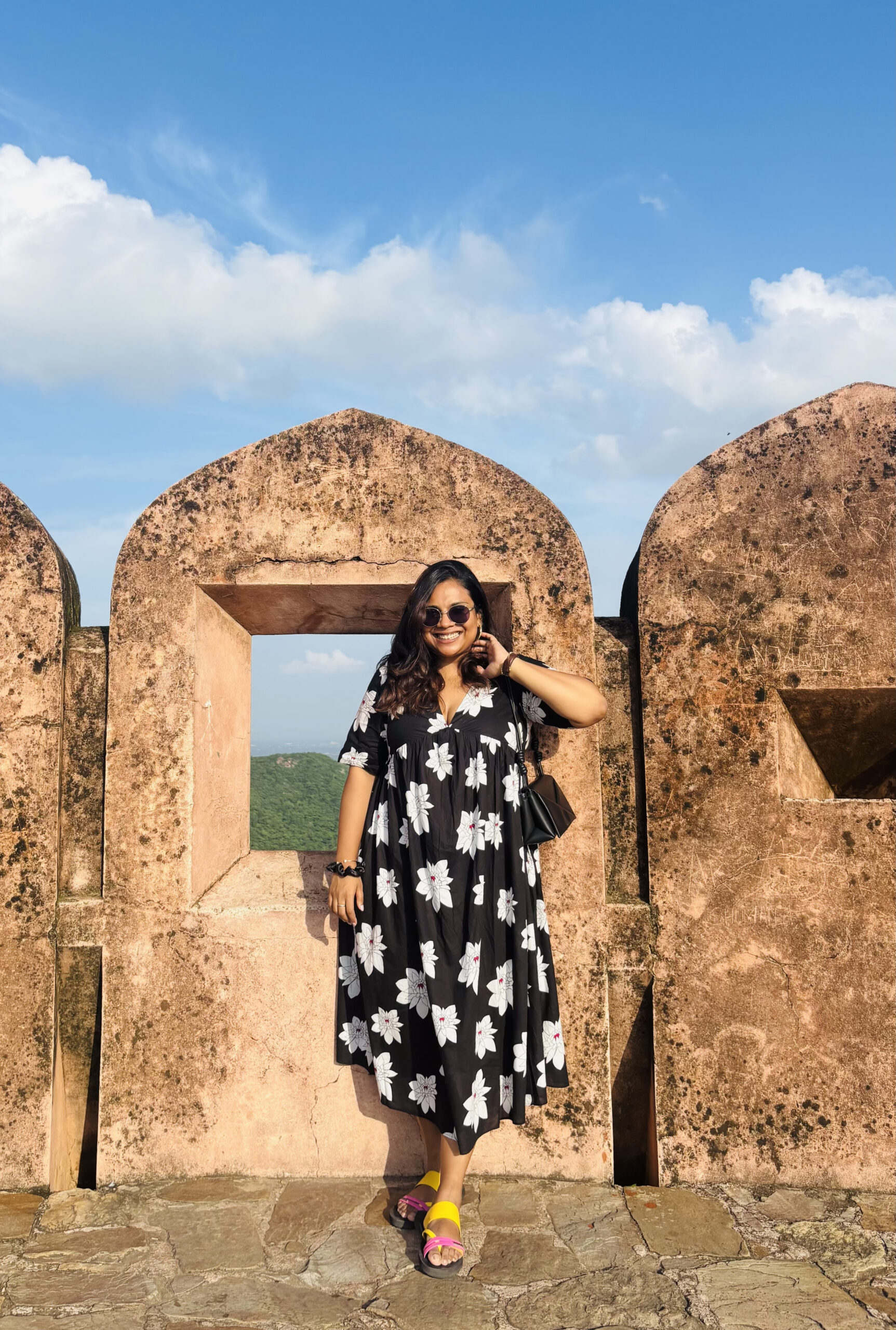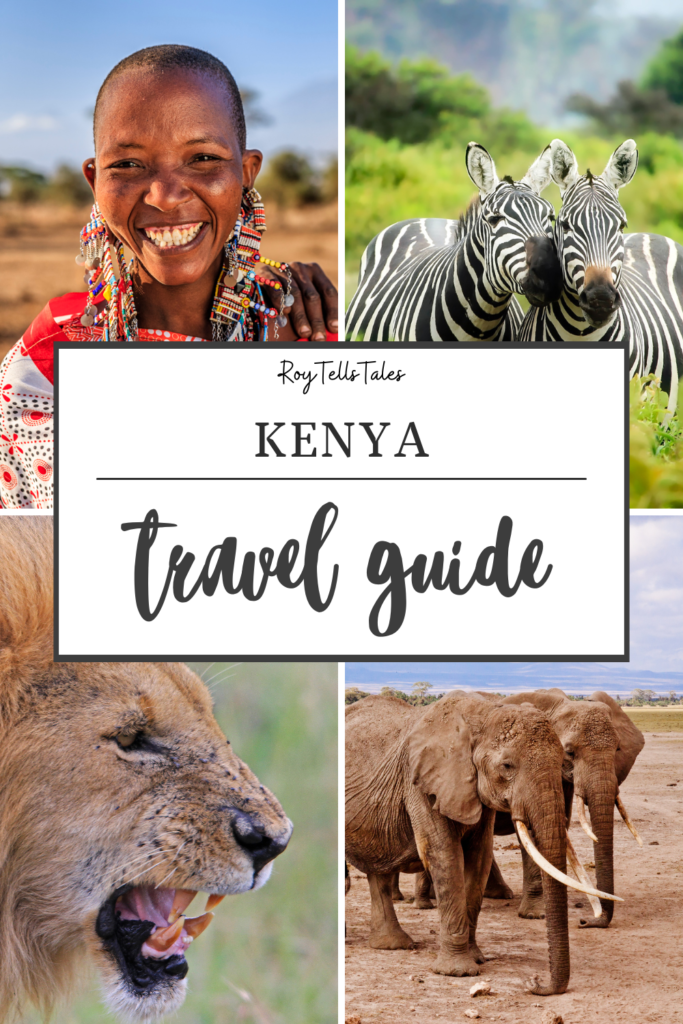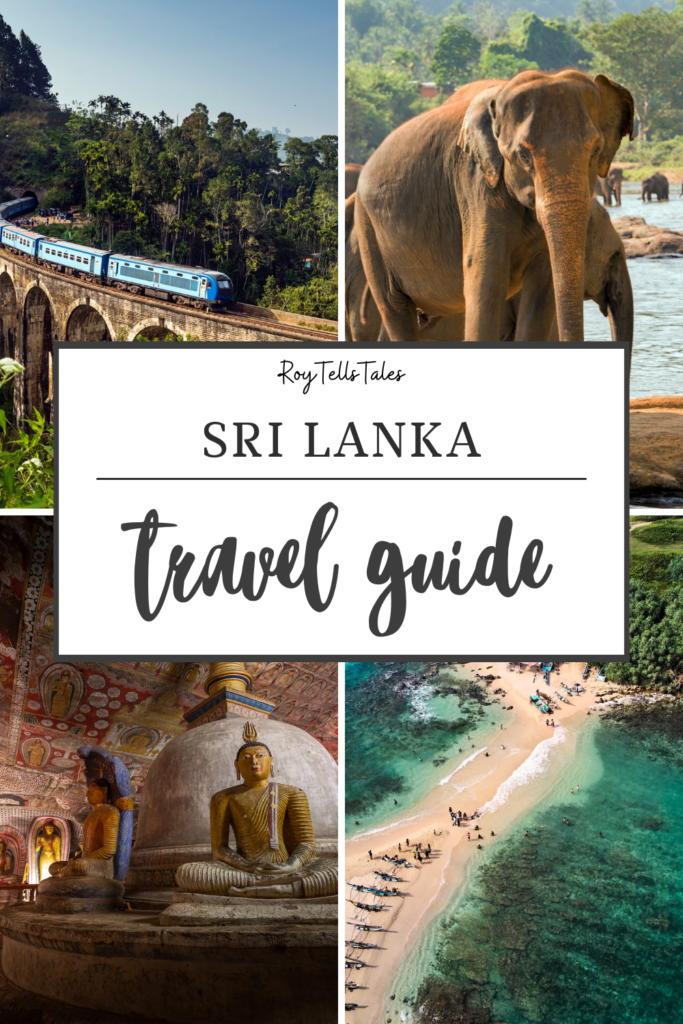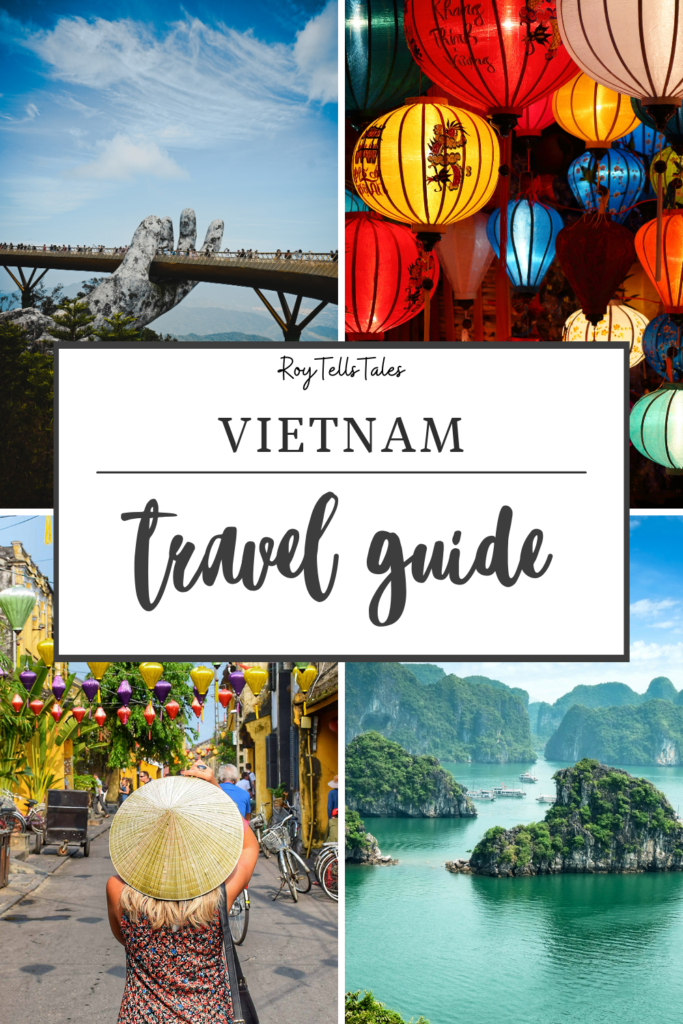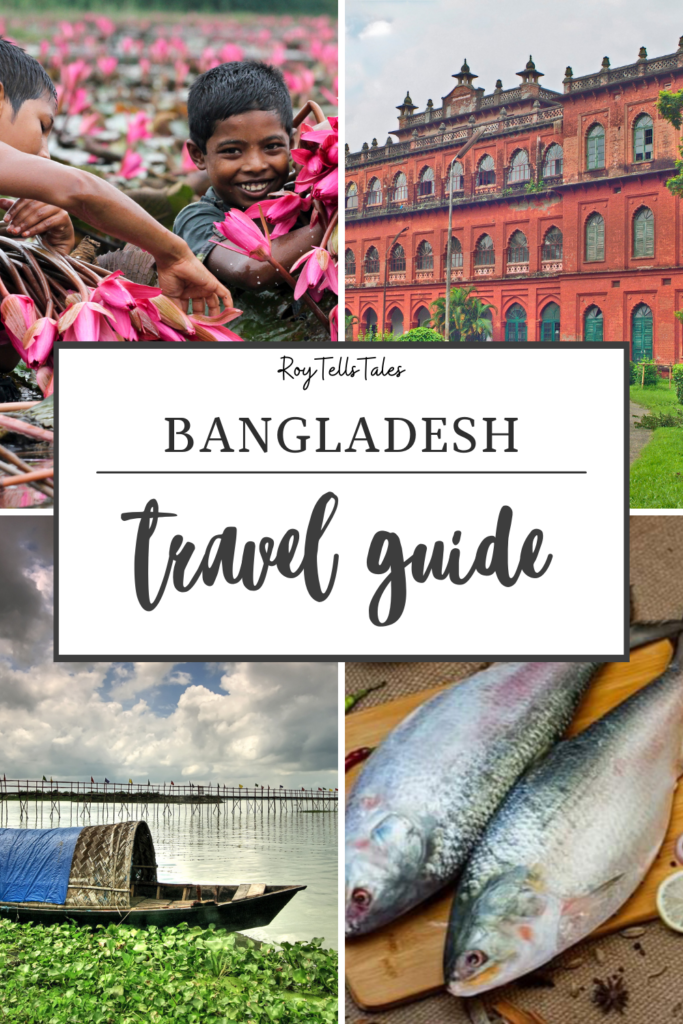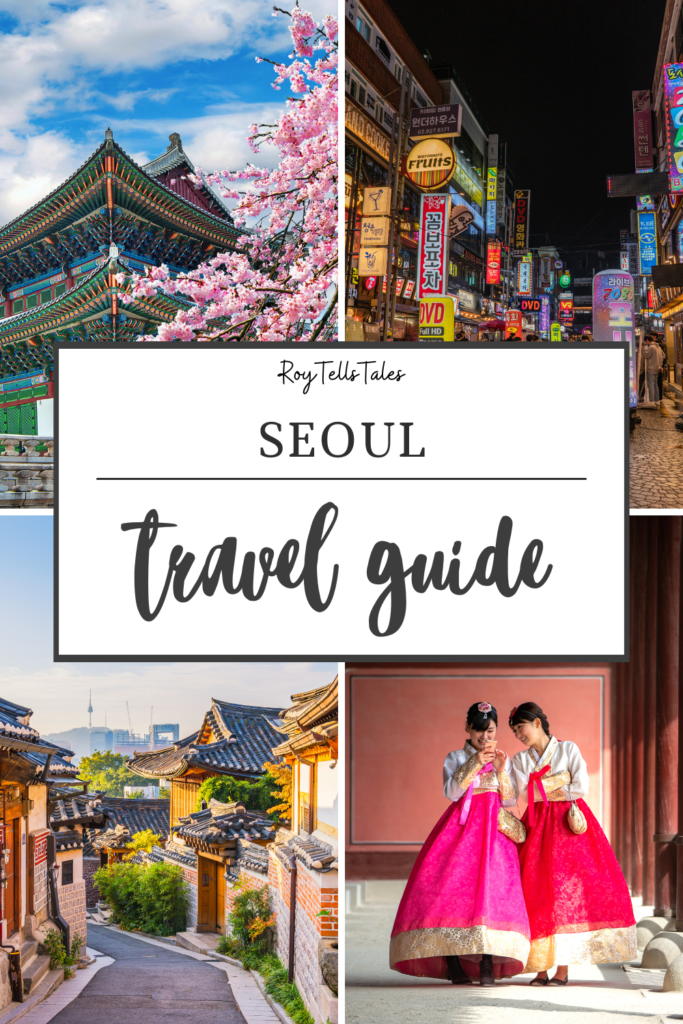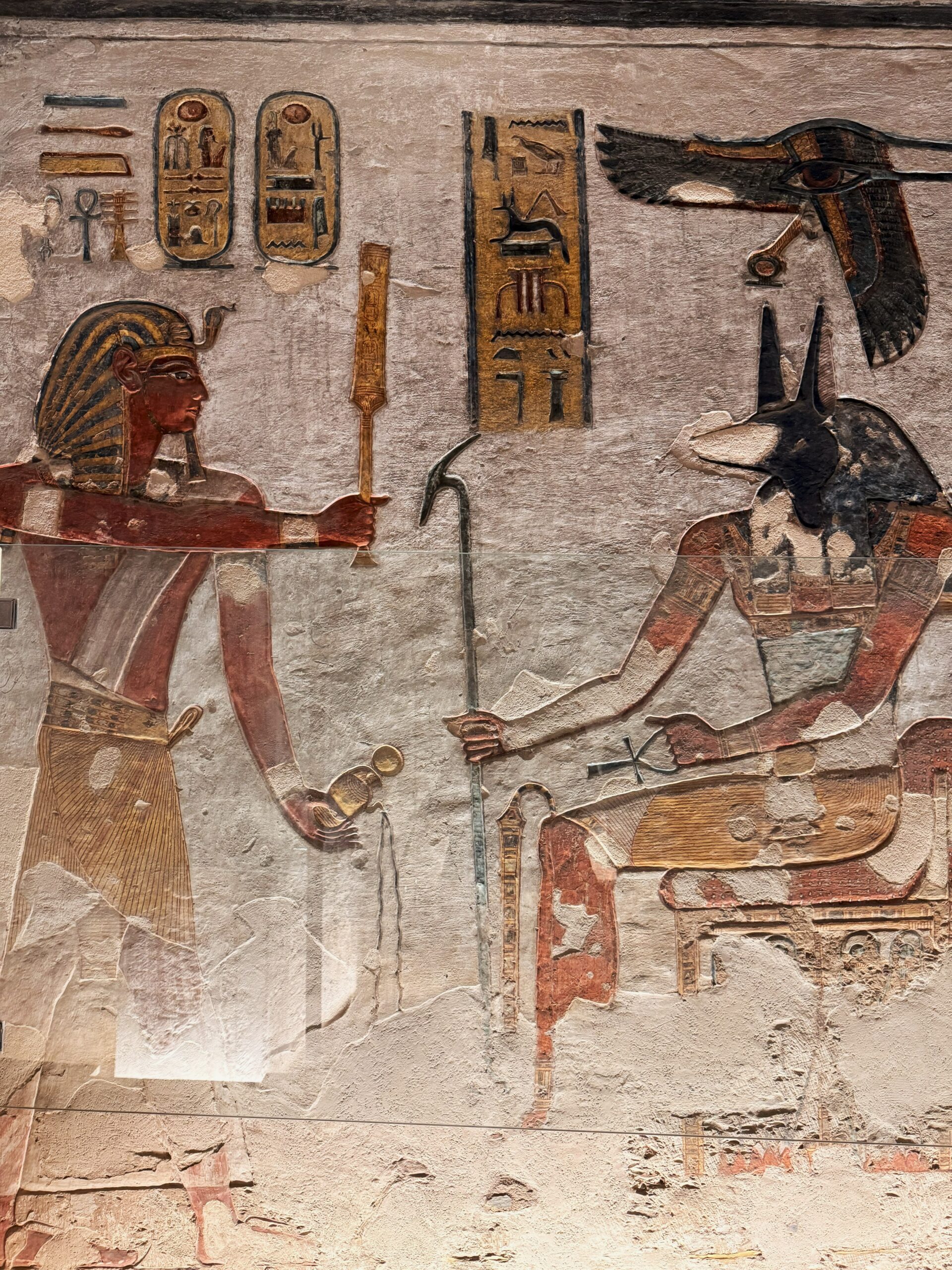

Exploring the Valley of the Kings in Luxor, Egypt | Travel Guide
When we think of pharaohs and mummies, the pyramids are usually the first thing that comes to mind. Well, that’s what most of us were taught about in school. But there’s another place in Egypt that’s just as important (maybe even more) and that’s the Valley of the Kings in Luxor.
While I was planning my trip to Egypt, I reached out to Karishma (a friend who’s also an avid traveler and explorer). She had visited Egypt a couple of years ago and told me I should definitely spend at least three days in Luxor. She suggested setting aside one full day to explore the West Bank of the Nile, including the Valley of the Kings, the Temple of Hatshepsut, and the Colossi of Memnon.
After speaking to her, I was flipping through the pages of the Lonely Planet, and came across a line about the Valley of the Kings, which said, “Each tomb is a book of the dead legible to those who know the vocabulary.” Soon, I started reading more about all these places and I knew I had to add them to my itinerary.
The Valley of the Kings (or as the Egyptians call it, Wadi al Muluk) is one of the most famous archaeological sites in the world. It served as the royal burial ground for pharaohs during the New Kingdom of Egypt (the 18th, 19th, and 20th dynasties). Some of the most well-known rulers from this period, like Tutankhamun, Ramses II, Tuthmosis III, and Seti I, were buried here, along with powerful nobles and even the wives and children of the pharaohs. It’s a fascinating place, steeped in history and stories of ancient royalty.
Here’s a complete guide for exploring the Valley of the Kings in Luxor, Egypt:
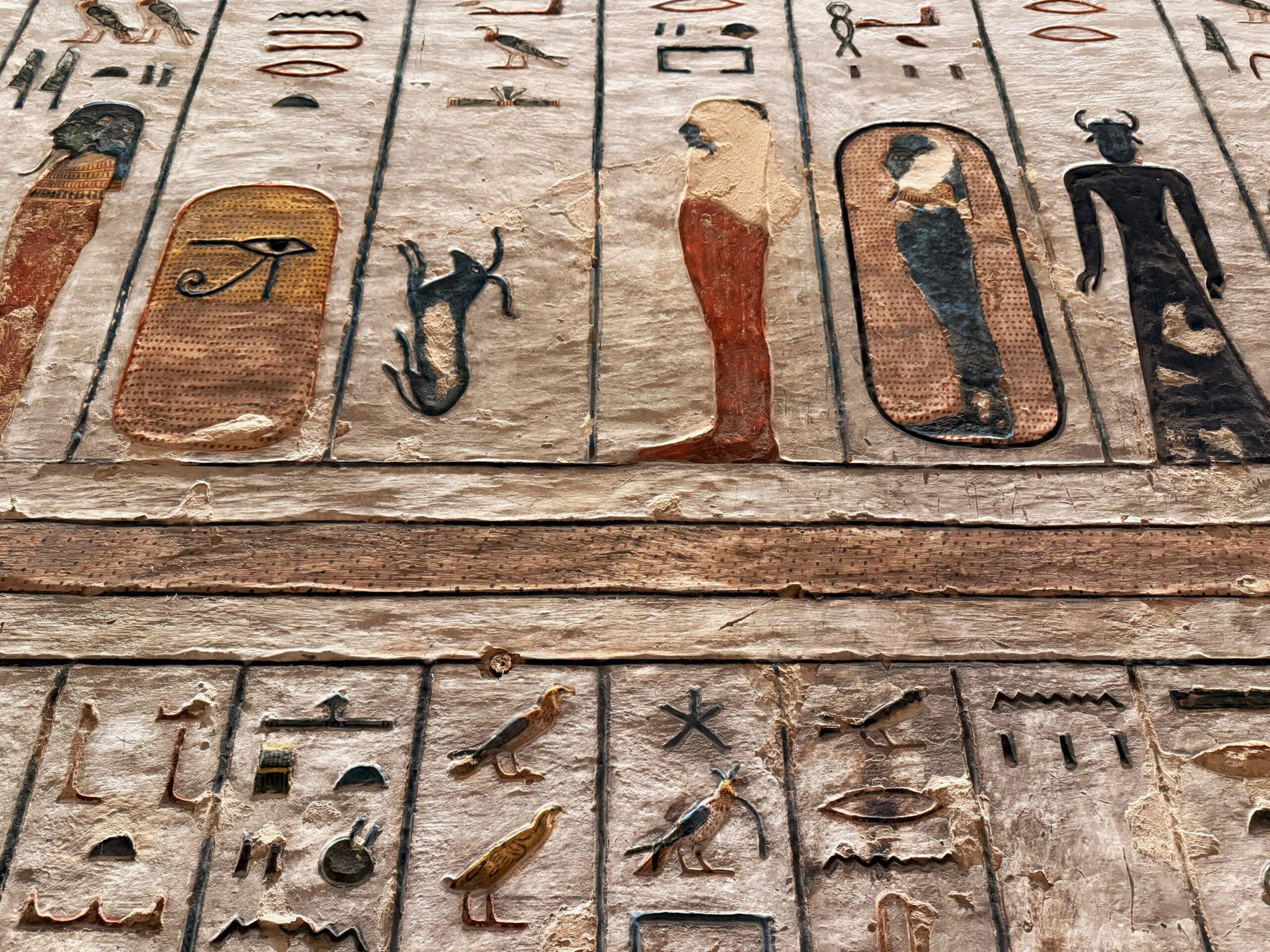
1. The Valley of the Kings is located on the West Bank of the Nile River, in Luxor
The Valley of the Kings rests on the serene west bank of the Nile River, not far from the bustling city of Luxor. I was quite amazed when Ahmad, our guide told us that this location was not just a random choice!
In ancient Egyptian culture, the West, where the sun sets, symbolized the start of the journey to the afterlife. While the temples of Luxor and Karnak were made on the East Bank, the sacred land on the West Bank became the final resting place for pharaohs and nobles, chosen for its spiritual connection to life, death, and rebirth. Also, the West Bank of the Nile is dominated by the peak of al-Qurn, a mountain that resembles the iconic pyramids of Giza.
Ahmad mentioned that this area was likely chosen as a burial ground to avoid the tomb robbing that had become a problem at the pyramids of Giza, Saqqara and Dashur. By carving tombs deep into the hills, pharaohs believed their treasures and mummies would be safe from thieves. These tombs were sealed with everything the king would need for the afterlife – his mummy, treasures, shrines, and funerary artifacts.
To me, it was quite intriguing to think about how much effort went into protecting these sacred resting places.
2. The tombs in the Valley of the Kings are as important as that of the pyramids
The royal tombs of the Valley of the Kings weren’t just ordinary tombs, but they were built for the pharaohs and powerful nobles of ancient Egypt’s New Kingdom.
As I explored, I couldn’t help but marvel at the skill and artistry that went into creating them. Each tomb is like a maze, with winding corridors and chambers covered in detailed hieroglyphics. These inscriptions tell the stories of the person buried there—their life, achievements, and journey to the afterlife.
It’s incredible to witness the engineering marvel and creativity that made all of this possible thousands of years ago.
3. There are nearly 65 tombs in the Valley of the Kings, but not all belong to the pharaohs
The Valley of the Kings is home to an incredible 65 known tombs. But something I found fascinating was that not all of them belonged to pharaohs! While many were built for Egypt’s ancient kings, others were made for queens, high priests, and other important figures in society. This mix of tomb occupants gives us a glimpse into the social structure of ancient Egypt, showing that even non-royals could earn a place in this sacred valley.
Interestingly, only a few tombs are open to the public at a time, and they rotate which ones you can visit. This is partly because some tombs are under renovation and also to help preserve them. Over the years, the tombs have faced a lot of damage – from treasure hunters and floods in the past to the effects of mass tourism today. Apparently, the humidity, carbon dioxide, and even the small amount of sweat left behind by visitors have harmed the delicate wall paintings.
To address this, the Department of Antiquities has installed dehumidifiers, glass screens, and a rotation system to protect and restore these incredible sites while still allowing people to experience their beauty. Once you visit this place, you’ll know that a lot of efforts are being made to preserve such an important part of history.
4. Some tombs have special tickets
There are different fees for visiting the tombs, and honestly, it’s almost impossible to see them all in one visit. With the standard ticket, you can choose three tombs to explore, which is a great way to start according to me.
Some tombs, like King Tut’s and Seti I’s, require an extra ticket, but they’re worth it if you’re interested. We were absolutely intrigued to see Tutankhamun’s tomb, which is said to be one of the best-preserved ones, and thus, we paid extra for it.
There’s also an additional fee for the buggy that takes you up to the tombs, from the main entrance, and I highly recommend it! The walk is long and during the day, the heat can be intense, so taking the buggy makes it easier.
5. The most famous tomb in the Valley of the Kings is the tomb of Tutankhamun
Thanks to our history textbooks, we know of him the most! Well, it goes without saying that Tutankhamun, or King Tut, is one of the most famous pharaohs of ancient Egypt, and his tomb is a must-see in the Valley of the Kings. Discovered in 1922 by British archaeologist Howard Carter, it was an incredible find because, unlike most other tombs, it was almost completely intact.
The tomb is legendary for the sheer number of artifacts it contained, over 5,000 items, including the famous golden death mask. This stunning mask, made of solid gold and decorated with precious stones, has become a symbol of ancient Egypt. Although all of King Tut’s treasures are now displayed in the museum in Cairo, including the mask, yet visiting his tomb is still an unforgettable experience.
As we stepped inside the tomb, my eyes were caught by the beautiful artwork, and a glass box in which the young pharaoh’s mummy still rests in peace.
6. The walls of all the tombs have detailed and intricate artwork
It was not just one tomb, but the artwork inside every tomb left me speechless.
As Ahmad described to us, we realized that these aren’t just random drawings, but they’re detailed scenes that tell stories about the pharaoh’s life, religious rituals, and offerings to the gods. It’s one of the reasons why the Valley of the Kings is such an incredible place to visit.
The artwork gives you a glimpse into the lives and beliefs of the pharaohs. You can see their journey to the afterlife, their battles, and even moments where they interact with the gods. There are also scenes of the pharaoh making offerings to the gods, which was such an important part of their religious practices. I was left awestruck to listen to the stories, only to realize that so much meaning is packed into every detail on those walls.
7. The Valley of the Kings doesn’t have any hidden treasures, and even if there is something, it hasn’t been found yet!
I won’t judge you, in case you think the Valley of the Kings is filled with golden treasures, but that’s not the reality. Most of the tombs were looted centuries ago!
For years, thieves targeted these royal resting places, stealing the precious artifacts meant to accompany the pharaohs into the afterlife. By the time archaeologists discovered many of the tombs, they were already empty. It’s a sad truth, but it’s part of the valley’s history.
Having said that, the site is still absolutely fascinating. The tombs themselves, with their intricate carvings and stunning hieroglyphics, are treasures in their own right. They tell stories that are far more valuable than gold.
8. The Valley of the Kings in Luxor remained an active burial site for approximately 500 years
Currently, standing as a vast stretch of deserted land, the Valley of the Kings on the bank of the Nile didn’t come together overnight. In fact, it was used as a burial site for about 500 years, from the 16th century to the 11th century BC, during what’s known as the New Kingdom of Egypt. This was a time when Egypt was at its peak, both in power and prosperity.
For centuries, the valley was buzzing with activity. Artisans, builders, and priests worked to create and decorate the tombs. Each new pharaoh wanted their tomb to be even grander than the last, leading to the incredible tombs we can visit today.
Not every pharaoh from this period was buried here, though. Some chose different places, but the Valley of the Kings remained the most popular choice for royal burials. When the New Kingdom ended, so did the valley’s role as a royal burial site. The tombs were sealed, the workers moved on, and the valley became quiet. But even though it’s no longer in use, the legacy of those 500 years still lives on through the stunning tombs that continue to attract visitors from all over the world.
9. Witness the beauty of the Temple of Hatshepsut
Hatshepsut, the only female pharaoh, has an amazing temple located in the middle of the desert, on the way from Luxor to the Valley of the Kings. She’s widely regarded as one of Egypt’s most successful pharaohs, and she built this temple to honor her achievements and the gods.
The temple is truly unique, with its impressive terraces, colonnades, and vibrant reliefs. As I walked through, I could see stories carved into the walls, telling of Hatshepsut’s birth, her coronation, and her successful trading journeys. It’s a remarkable place, and you can’t help but feel the power that lingers here.
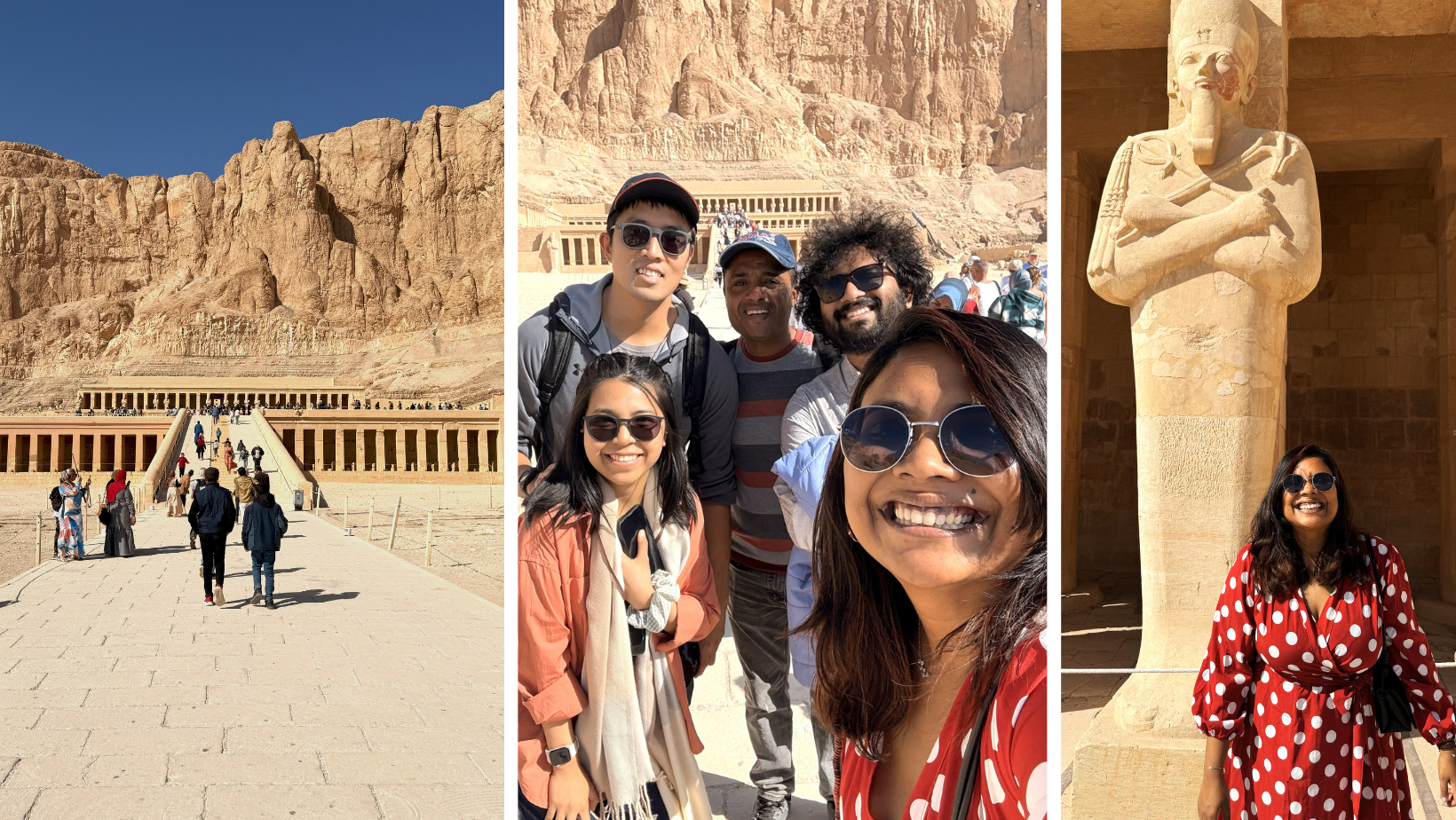
10. Admire the Colossi of Memnon while leaving the Valley of the Kings
There’s not much left here, and excavations are still happening, but the Colossi of Memnon are something else. These giant stone statues of Pharaoh Amenhotep III have been standing for an incredible 3,400 years, at the front of the ruined Mortuary Temple of Amenhotep III, known to be the largest temple in the Theban Necropolis.
At 60 feet tall, they’re absolutely breathtaking and a perfect photo spot before leaving the Valley of the Kings in Luxor, Egypt.
It took us nearly five hours to explore the Valley of the Kings, along with the Temple of Hatshepsut and the Colossi of Memnon. As we hit the dusty roads again, I couldn’t help but think of the ancient civilization that led to the creation of this breathtaking place.
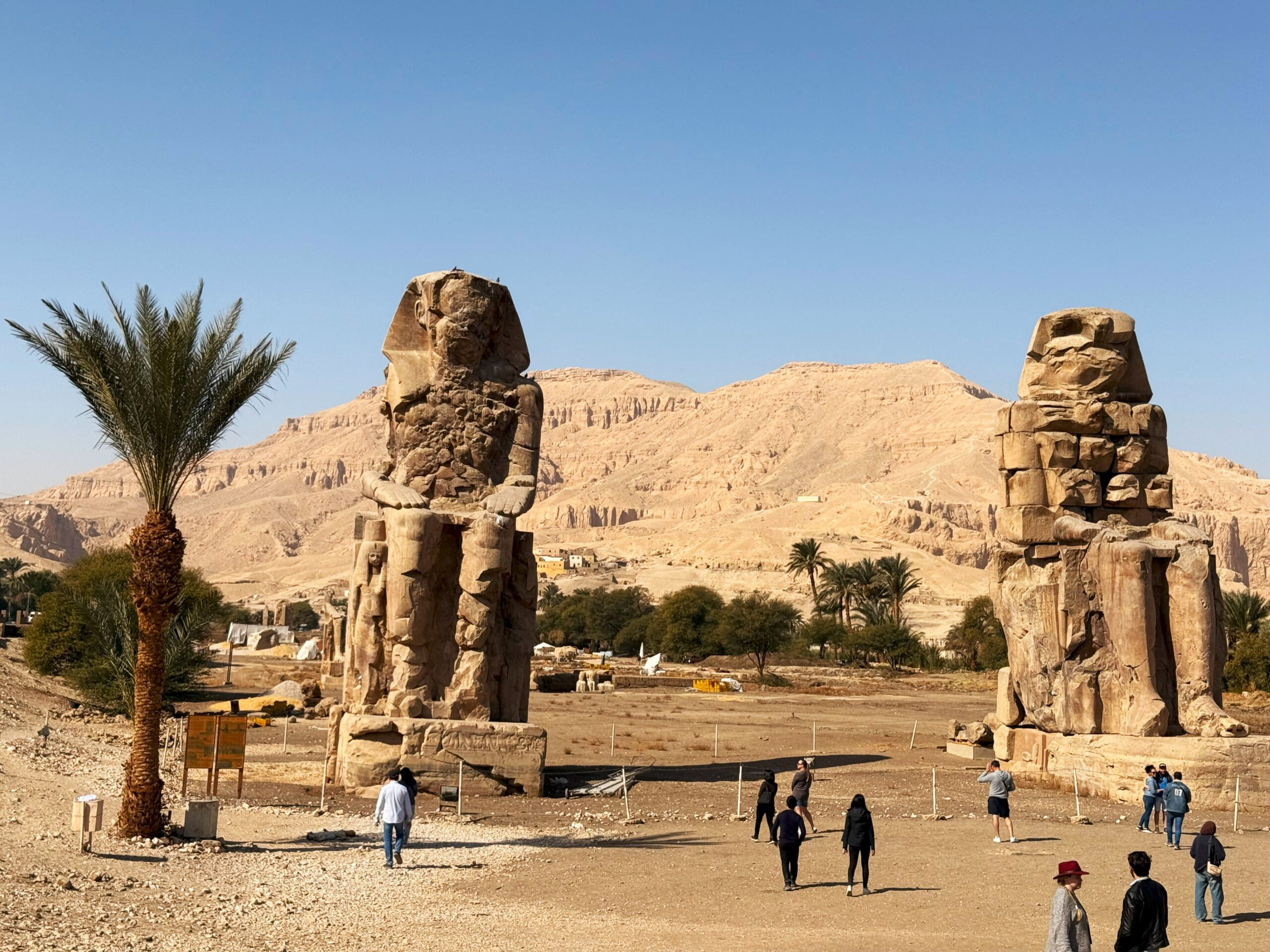
Frequently Asked Questions about the Valley of the Kings in Luxor, Egypt
1. Why is it important to visit the Valley of the Kings in Luxor?
Truth be told, no trip to Egypt is complete without visiting the Valley of the Kings. This place was the royal burial ground for the pharaohs of the New Kingdom.
Here, you can step into the actual tombs where the mummies of kings were buried, along with treasures, shrines, and artifacts meant to guide them in the afterlife.
2. How are the tombs in the Valley of the Kings numbered?
The tombs here are labeled with the abbreviation “KV,” which stands for Kings Valley. The numbering starts with KV1 (Ramses VII) and goes all the way up to KV65. If another tomb is discovered (which is very possible), the numbering will continue to change.
3. Which tombs inside the Valley of the Kings are open for tourists?
Out of the 65 tombs discovered so far, not all are open to visitors. While some are closed for restoration, others are shut in order to reduce the footfall.
As of December 2024, these tombs were open and included in the standard ticket (which lets you visit three tombs):
- KV1 – Ramesses VII
- KV2 – Ramesses IV
- KV6 – Ramesses IX
- KV8 – Merenptah
- KV11 – Ramesses III
- KV14 – Tausert-Setnakht
- KV15 – Sety II
- KV16 – Ramesses I
- KV43 – Thutmose
- KV47 – Siptah
Some tombs require an extra ticket to visit:
- KV9 – Ramesses V & VI (220 EGP per person)
- KV17 – Seti I (2000 EGP per person)
- KV62 – Tutankhamun (700 EGP per person)
- Tomb of Ay (200 EGP per person)
4. How much does the entry ticket to the Valley of the Kings cost?
The standard entry ticket costs 750 EGP per person and allows you to visit three tombs. If you have an international student ID, you can get the ticket for 375 EGP.
There’s also an extra 20 EGP fee if you want to take the little buggy ride up to the entrance (and trust me, it’s worth it—it’s a long walk and super hot).
5. Is a guide needed to visit the Valley of the Kings in Luxor?
You can visit the Valley of the Kings on your own, but having a guide adds so much to the experience. These guides can share fascinating stories and insights that really bring the place to life. I mean I absolutely enjoy listening to the guide and their stories, whenever I am exploring a historical place – and this wasn’t any different!
Having said that, I would like to highlight that guides aren’t allowed inside the tombs. They’ll give you an overview at the beginning, share tips on what to look for, and then you’ll explore the tombs on your own.
There are several guided tours in Luxor that you can opt for, to explore the Valley of the Kings as well as popular sites like the Luxor and the Karnak Temples.
6. How much time is needed to explore the Valley of the Kings?
It depends on your interest level. If you’re just looking to snap a few photos and skip the details, you can be done in an hour or so. But if you’re curious about the history and want to take your time, I’d recommend spending at least five to six hours here.
7. How far is the Valley of the Kings from the main city of Luxor?
The Valley of the Kings is on the West Bank of the Nile, about 40 minutes by road from Luxor city. You can drive there, or take a felucca ride across the Nile and then drive to the valley.
8. Which are the most popular tombs in the Valley of the Kings?
Every tomb in the Valley of the Kings is unique and tells its own story. But the most popular one has to be King Tut’s tomb (KV62). It’s small and not as elaborately decorated as some others, but seeing the mummy of Tutankhamun is a surreal experience.
Another standout is the tomb of Seti I, which is considered one of the most beautiful tombs in the valley. The artwork and carvings are absolutely breathtaking.
Things to remember while exploring the Valley of the Kings
- Carry your international Credit/Debit Card for tickets: Entrance tickets can only be purchased with a card—they don’t accept cash here. If you plan to visit any tombs that require an additional ticket, make sure to buy all the tickets at the entrance. It’s more convenient to handle it all at once.
- Bring cash for snacks and tips: While tickets are card-only, you’ll need Egyptian Pounds for snacks, drinks, or tipping the bathroom attendants. Make sure you have small denominations handy.
- Wear comfortable clothes and shoes: Visiting the Valley of the Kings involves a lot of walking, so comfortable footwear is a must. Some tombs are small and narrow, requiring you to crouch or crawl. The weather in Luxor is usually very hot, so dress lightly and comfortably.
- Don’t forget to carry sunscreen: The sun can get really harsh here, so it’s important to protect yourself with sunscreen, sunglasses, and maybe even a hat!
- Take note of the tombs and visit the National Museum of Egyptian Civilization later: If you’re visiting the Valley of the Kings, plan to stop by the National Museum of Egyptian Civilization in Cairo afterward. This incredible museum showcases over 120,000 artifacts from the Valley, including the mummies of Hatshepsut, Thutmose III, Ramses II, and Seti I. It’s the perfect follow-up to your trip and adds so much context to what you’ve seen.
We were in Luxor for three days, exploring the temples of the East Bank and tombs of the West Bank, witnessing the sunrise from a hot air balloon, enjoying a sunset felucca on the Nile, and walking around the Corniche. But I have to say that exploring the Valley of the Kings, in particular, is something that will stay with me for long. Standing in the presence of these ancient tombs, imagining the lives and legacies of the pharaohs, was a humbling experience.
If you’ve been to the Valley of the Kings in Luxor, do let me know about your experience. And in case you’re planning a trip to Egypt, drop a comment below and I’d love to share my recommendations with you.
Disclaimer: This post contains a few affiliate links. If you happen to click on any of them and make a purchase, I might earn a small commission, at no extra cost to you. Just know that I truly appreciate your support if you choose to do so.
